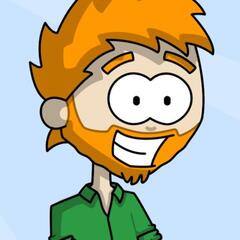Invader Stu: Dutch Circle Party Closed Loop Theory
"It’s not a circle party. I promise," the host of the party that is apparently not a circle party tries to assure me.
Ever since I wrote about the phenomenon of Dutch circle parties, everyone has become very nervous about inviting me to parties. It is as if they think of me as some sort of secret party critic who will sit in the corner (if I can find one), quietly judging their party based on how Dutch it is.
They will often take drastic steps in an attempt to stop their party becoming the typical kind of Dutch Circle Party that I write about. Unfortunately, in their desperation, they tend to take the name "Circle Party" a little too literally.
Circle party variations
"See. The chairs are not in a circle," the host happily points out when I later arrive at the party. "We arranged them in a triangle instead."
I silently nod and make a mental note to rate the party in my review book later.
This happens a lot. The problem is no one seems to realise that a circle party does not specifically require the chairs to be arranged in a circle. In fact, any attempt to arrange the seating in a different shape will still result in a circle party.
Triangles, squares, rectangles, dodecahedrons and artistically abstract squiggly random shapes will all still end with the same outcome.
What is a Dutch circle party?
Allow me to explain it scientifically: a circle party is actually any party where the chairs have been arranged in any shape or pattern that forms a closed loop.
There are other scientific factors that must be present, such as tea, cake and someone’s grandmother, but the primary factor is a seating arrangement that creates a closed loop of social interaction. It does not actually have to be round.
Dutch Circle party was just a catchier name than "Dutch Closed Loop Party."
A break in the loop
"It’s not a circle. See. We left a gap," the host will sometimes say.
This might seem like a good solution to the problem. However, even if there is a "break" in the loop, it merely creates a section where the party guests have to talk a little louder to hear each other over the space between seats.
The "circle" still exists even if you cannot see it. It is being created by your guests. They will most likely draw their seats closer together anyway, thus closing the physical loop as well.
Doubling the circle-ness
"We made two seating areas instead of one," the host will try if they are getting desperate.
Good idea. Unfortunately all you have achieved is the creation of two circle parties in one, thus doubling the circle-ness of your circle party... In trying to stop the circle party from happening you have only made it stronger.
Plus your Dutch guests will inevitably merge the two circles together, dragging the seating over from one to the other. It is their natural instinct.
The "normal" birthday parties
"What should birthday parties look like then?" the party host will often ask me in a slightly annoyed tone at the end of the mid-party scientific lecture as I put my flip board away.
The difference is usually that there are less seats than guests.
Thus, guests are free to move around the party like particles colliding with each other, spilling their drinks. This is because they lack the constraints of a physical chair.
This idea usually freaks the Dutch party host out because they cannot imagine a party:
› without adequate seating
› with music loud enough to require occasionally shouting to be heard
› that starts after 7pm instead of finishing before it...
Want to know more about the typical circle parties? Check out Stu’s guide on How to identify a Dutch circle party.
Invader Stu is an accident prone Englishman who has been suffering from Dutch culture shock for the last ten years. Enjoy his stories, more of which can be found on Invading Holland.


COMMENTS
Leave a comment